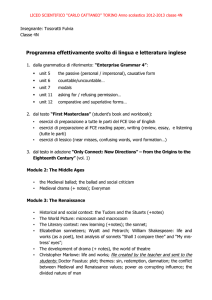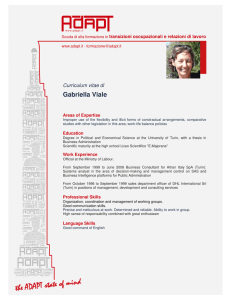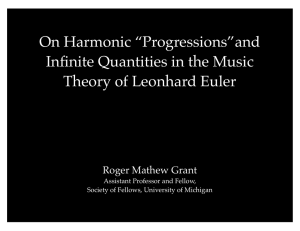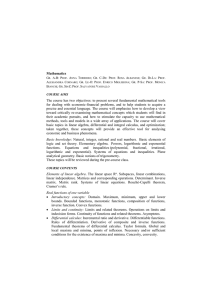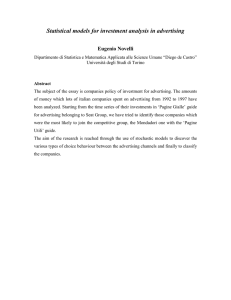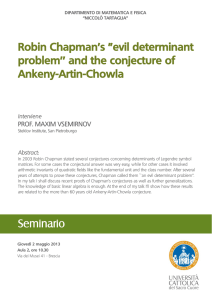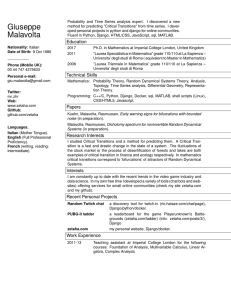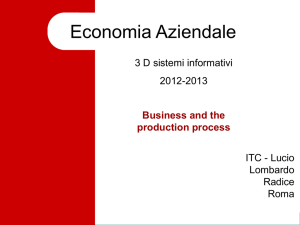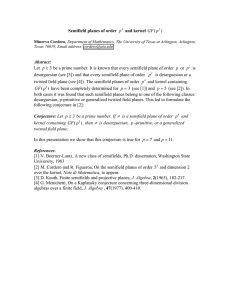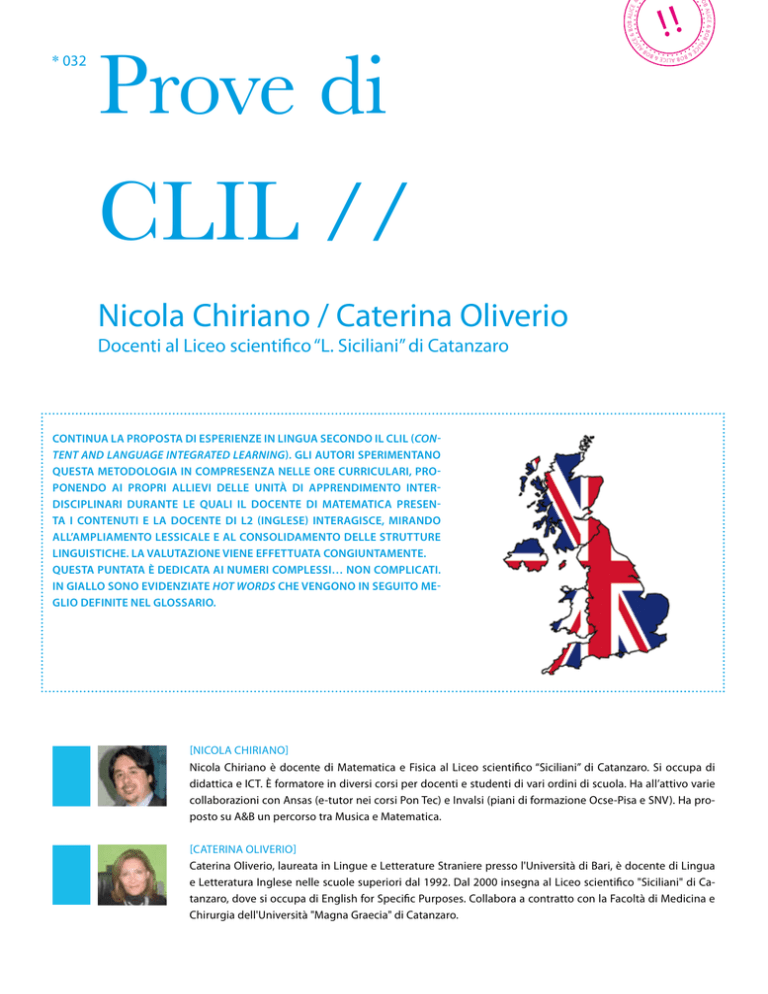
* 032
Prove di
CLIL //
Nicola Chiriano / Caterina Oliverio
Docenti al Liceo scientifico “L. Siciliani” di Catanzaro
Continua la proposta di esperienze in lingua secondo il CLIL (Content and Language Integrated Learning). Gli autori sperimentano
questa metodologia in compresenza nelle ore curriculari, proponendo ai propri allievi delle unità di apprendimento interdisciplinari durante le quali il docente di Matematica presenta i contenuti e la docente di L2 (Inglese) interagisce, mirando
all’ampliamento lessicale e al consolidamento delle strutture
linguistiche. La valutazione viene effettuata congiuntamente.
Questa puntata è dedicata ai numeri complessi… non complicati.
In giallo sono evidenziate hot words che vengono in seguito meglio definite nel Glossario.
[Nicola Chiriano]
Nicola Chiriano è docente di Matematica e Fisica al Liceo scientifico “Siciliani” di Catanzaro. Si occupa di
didattica e ICT. è formatore in diversi corsi per docenti e studenti di vari ordini di scuola. Ha all’attivo varie
collaborazioni con Ansas (e-tutor nei corsi Pon Tec) e Invalsi (piani di formazione Ocse-Pisa e SNV). Ha proposto su A&B un percorso tra Musica e Matematica.
[Caterina Oliverio]
Caterina Oliverio, laureata in Lingue e Letterature Straniere presso l'Università di Bari, è docente di Lingua
e Letteratura Inglese nelle scuole superiori dal 1992. Dal 2000 insegna al Liceo scientifico "Siciliani" di Catanzaro, dove si occupa di English for Specific Purposes. Collabora a contratto con la Facoltà di Medicina e
Chirurgia dell'Università "Magna Graecia" di Catanzaro.
* 033
Complex...
but not complicated
[Imagine all the... numbers]
Consider this geometric problem:
“divide a segment of length 10 into two parts so that the rectangle having them as
sides has area 40”
Thanks to the works of René Descartes (1645) and
Leonard Euler (1765), nowadays we write those
numbers in the form
5+
_ i√15
where
i2: = -1
is called the imaginary unit.
[Plotting imaginary numbers]
K.F. Gauss in his thesis (1799) and J.R. Argand (1806)
developed a very simple method to “visualize” complex numbers, that is numbers in the form
z = a + ib
with a real part a = Re(z) and an imaginary part
b = Im(z). Their idea was to represent z on the plane
—
by the vector OP where P = (a,b).
Figure 1
Since the maximum area of such a rectangle is 25, the problem has no solution in
, that is to say, it has no geometric solution.
We can try an algebraic way to solve the problem: we label x and 10 - x the two
parts the segment is splitted into, thus obtaining
x (10 - x) = 0
namely
x2 - 10x + 40 = 0 .
Note that if a and b are solutions to this equation, the following relations hold
a + b = 10 and a ∙ b = 40 .
When Girolamo Cardano (Ars Magna, 1545) tried to solve the problem, despite of
Tartaglia’s attempts to discourage him, he obtained two “strange” quantities with
an imaginary part:
5 + √-15 and 5 - √-15
whose sum
(5 + √-15) + (5 - √-15) = 10
and product
(5 + √-15) · (5 - √-15) = 25 - (-15) = 40
are actually what we were looking for.
Figure 2
[(Not so) complex operations]
We can treat complex numbers with the usual algebraic operations for real numbers. Therefore, if
z = a + ib and w = c + id
their sum is
z + w = (a + c) + i(b + d)
* 034
and their product
z · w = (ac - bd) + i (ad + bc) .
We define conjugate of z the complex number
_
z = a - ib
with the property
_
z · z = a2 + b2 ≥ 0
and the inverse of z the complex number
_
1
z
a
b
= _= 2
-i 2
z
z·z
a + b2
a + b2
[Exercise]
Let’s try to write the complex number
z=1+i
into its polar and exponential forms. Since ρ = √2 and θ = π/4, we get
z = √2(cos
π
π
+ i sin ) = √2ei π/4
4
4
Little check:
√2(cos π + i sin π ) = √2( √2 + i √2 ) = 1 + i .
4
4
2
2
useful to perform a division in the guise of a product:
w =w· 1 .
z
z
[Polar form]
By using a little Trigonometry,
a = ρcosθ, b = ρsinθ
where
• ρ = |z| = √a2 + b2 is the length of the vector z: it’s
called modulus of z
• θ is the angle formed by z and the x axis: it’s called
the argument of z
[Glossary]
1. i2: = -1 : i squared is by definition equal to negative one
2. z = ρ(cosθ + i sinθ) : zed is rho times (= multiplied by) cosine of theta plus sine
of theta
3. eiπ + 1 = 0 : e (Napier’s number) elevated (or “to the power”) i times pi plus one
is zero
[And finally...]
Explain why the following strip can make people smile:
So z can be written in the equivalent “polar” or trigonometric form:
z = ρ(cosθ + i sinθ) .
Figure 3
[Euler’s formula]
In 1743 Euler discovered an outermost relationship
between three basic functions: exponential in base
e, sine and cosine:
eiπ = cosx + i sinx .
With the value, we obtain Euler's "the formula",
eiπ + 1 = 0
a masterpiece known as "the most beautiful formula" of Mathematics.
/////////////////////////////////////////////////////////////////////////////////////////////// : )


